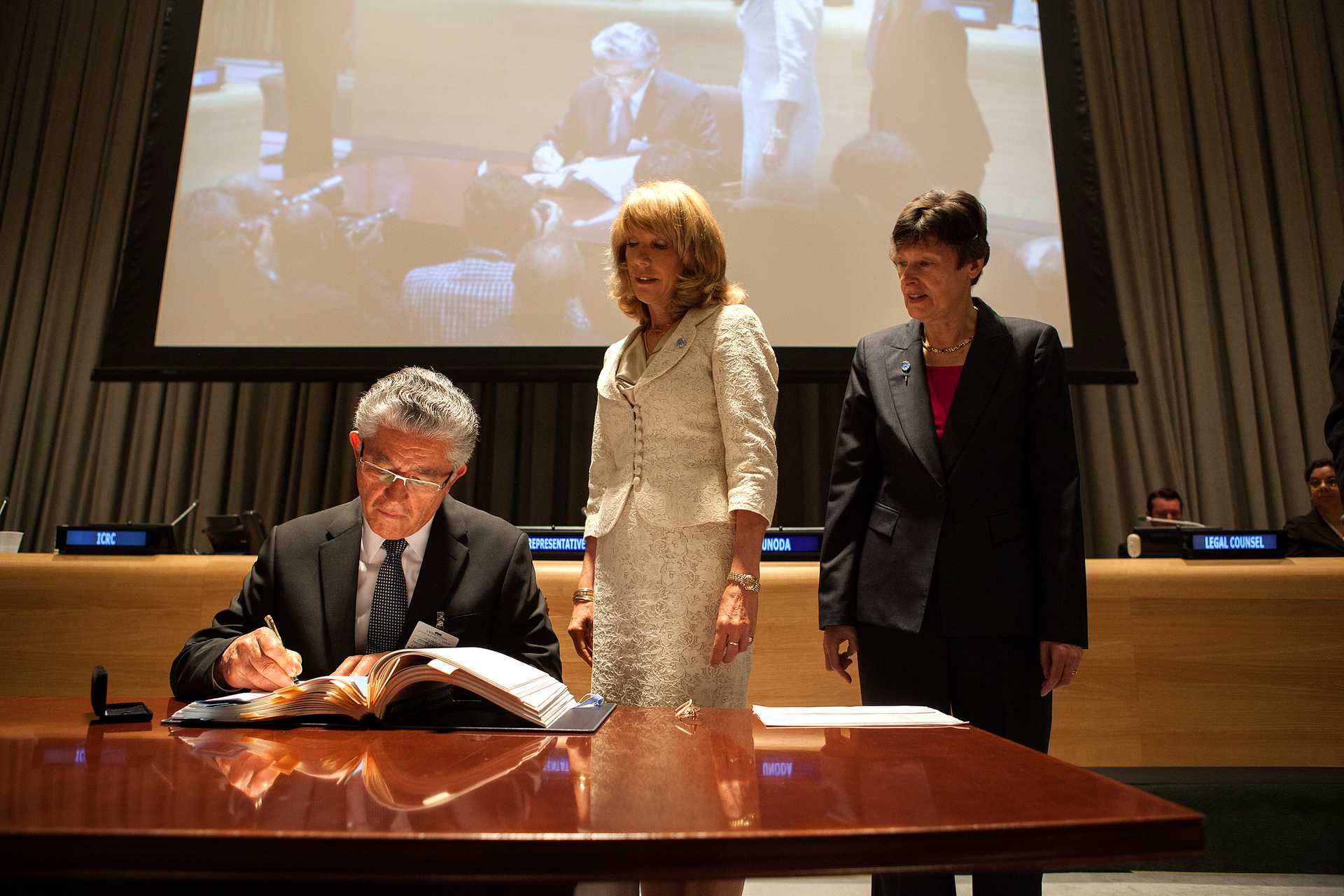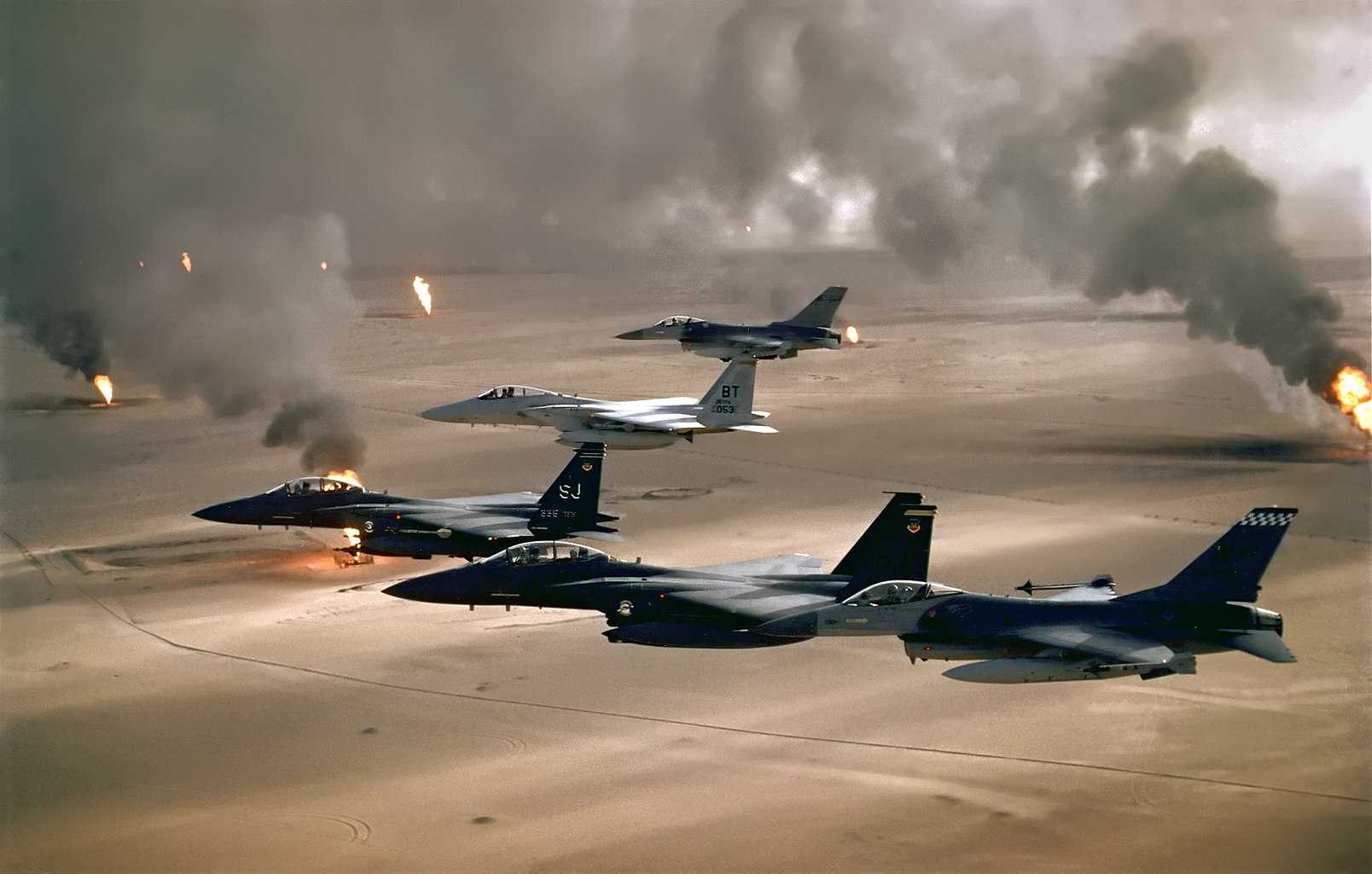Arms Embargoes
Arms embargoes imposed by UN Security Council are the only legally binding international instruments that apply to all UN member states which prohibit arms transfers to specific recipients (under UN Charter, Chapter VII, Article 41). Arms embargoes are used to put pressure on states or other actors whose behaviour is deemed a threat to international peace and security. These arms embargoes have also been established in response to violations of IHL, as in the case of Rwanda in 1994 and the Sudan region of Darfur in 2004. Importantly, their implementation is monitored by sanctions committees and UN panels of experts.
The EU also imposes arms embargoes under its Common Foreign and Security Policy (CFSP). These are binding for EU member states and form part of what the EU generally refers to as ‘restrictive measures’ (see Chapter 4).
UN arms embargoes and EU restrictive measures
Sources: European Commission/EU Sanctions Map, NaturalEarth.
The Wassenaar Arrangement
The Wassenaar Arrangement on Export Controls for Conventional Arms and Dual-Use Goods and Technologies (see also Chapter 3) is a politically binding multilateral export control regime that aims to prevent transfers that contribute to ‘destabilising accumulations’ of conventional weapons and dual-use goods and technologies that could threaten international and regional security and stability. States participating in the Wassenaar Arrangement also seek to promote ‘transparency and greater responsibility’ in the transfers of such weapons and technologies. Participating states have produced best practice documents and voluntary guidelines, which also include provisions on assessing the risk that weapons could be used to violate human rights or the laws of armed conflict (Wassenaar Arrangement, n.d.).
Wassenaar Arrangement
The Wassenaar Arrangement is a multilateral export control regime established on July 12, 1996, in Wassenaar, Netherlands. It aims to promote transparency and responsibility in transfers of conventional arms and dual-use goods and technologies, thereby preventing destabilizing accumulations. Participating states implement national policies to ensure that such transfers do not contribute to the development or enhancement of military capabilities that undermine regional and international security. The Arrangement facilitates information exchange on transfers and denials of specified controlled items to non-participating states, enhancing cooperation among members. It is not legally binding and decisions are made by consensus. The Wassenaar Arrangement's Secretariat is located in Vienna, Austria.
The Arms Trade Treaty
The adoption of the Arms Trade Treaty
The ATT is the first legally binding international agreement to establish standards for the international trade in conventional arms, to prevent their misuse and illicit transfers. The Conference of States Parties (CSP) is the main decision-making body of the ATT. The CSP convenes once a year for one week. It is supported by the ATT’s permanent Secretariat, based in Geneva.

The steps that led to the adoption of the ATT are the result of longer-term advocacy efforts conducted by civil society organisations and like-minded states calling for stronger controls on transfers of SALW and the inclusion of human security principles in more stringent and legally binding regulations on the international arms trade.3 The ATT also emerged out of attempts by Western states to ‘globalise’ the standards in arms export controls they had adopted at the national level or as part of their participation to the Wassenaar Arrangement and adherence to EU instruments.4
The process of negotiating the ATT, which brought together civil society, states and other stakeholders, began in 2006, following the adoption of a UN General Assembly resolution tasking the UN Secretary General to undertake exploratory work towards a future arms trade treaty. A UN Conference was convened in July 2012 to conduct the negotiations. However, states failed to achieve consensus on the final text in the negotiations. Another approach was taken and the ATT was adopted in April 2013 by a vote of the UN General Assembly. It entered into force in December 2014.5
Treaty status
Arms Trade Treaty (ATT)
The Arms Trade Treaty regulates the international trade in conventional arms and aims to prevent illicit trading and diversions.
Current Adoption
Data: UNODA Treaties Database
All states parties and signatories of the Arms Trade Treaty (ATT)
Data: The Arms Trade Treaty, Natual Earth. Graphic: PRIF
Main provisions of the ATT
What does the ATT control?
The ATT outlines common standards for the transfers of conventional arms – including SALW – as well as ammunition, parts and components.6
These standards apply to export, as well as import, transit, transshipment and brokering. To implement the standards, the ATT requires states parties to establish and maintain effective national control systems, which includes the adoption of a national control list and establishment of a competent national authority. Promoting transparency in arms transfers is one of the main principles guiding the implementation of the ATT which, for this purpose, establishes reporting obligations for states parties.
When should states not authorise arms transfers?
At the core of the ATT are provisions defining circumstances in which arms transfers should be prohibited. These restate the obligations that all states already have under international law, such as the prohibition of arms transfers to a recipient subject to a UN Security Council arms embargo. The ATT prohibits arms transfers where states have knowledge that the items will be used in the commission of genocide, crimes against humanity, grave breaches of the Geneva Conventions of 1949 or other war crimes. The ATT also reiterates states’ obligation to refrain from supplying weapons in the event that these may be used to commit IHL violations. This directly arises from states’ duty to ‘ensure respect’ of IHL ‘in all circumstances’ as enshrined in article 1 common to all 1949 Geneva Conventions.7
In cases where the transfer is not prohibited, the ATT requires states to assess whether the items that they export ‘would contribute to or undermine peace and security’ as well as to assess the risk of them being used to commit or facilitate serious violations of IHL or human rights law or offences under international conventions or protocols relating to terrorism or international organised crime. States shall deny transfers in the event that such risks are ‘overriding’. The ATT is also the first legally binding instrument to explicitly acknowledge the linkages between conventional weapons and gender-based violence (GBV). States parties to the ATT must take into account the risk of the arms being used to commit or facilitate serious acts of GBV or violence against women and children. Specific provisions also address the risk of arms diversion. States parties are required to take measures both to assess and mitigate the risk of diversion, and to cooperate with other states parties, e.g. through information sharing.
Challenges to arms export controls
Efforts to establish and promote instruments and standards regulating the international arms trade, which culminated in the adoption of the ATT, contribute to mitigating the negative impact that irresponsible, unregulated and illicit arms transfers can have on security, human suffering and sustainable development.
However, there are still several gaps in the implementation of the current framework and it also presents some challenges:
- Effective implementation of arms export controls: The introduction of prohibitions and risk assessment criteria has had a positive impact in terms of restraining decision-making processes regarding arms transfers. However, there remain varying interpretations of the provisions of the ATT and arms are still being transferred to countries with a problematic record in terms of respect of human rights and IHL.
- Universalisation: Despite China’s ratification of the ATT in 2020, some of the major arms exporters are still not states parties to the ATT. For example, Russia has not signed the ATT. The United States has signed but not ratified the treaty, and has indicated that it does not intend to join the ATT. More generally, the process of universalising the ATT is currently undergoing a phase of stagnation. Gaps in membership are also particularly apparent in certain regions, such as the Asia–Pacific and the Middle East, even though these are affected by rapid military build-ups, increasing levels of military expenditure and regional tensions.
- Transparency and reporting: Reporting on arms transfers is declining both in the context of the ATT and other relevant instruments, such as UNROCA, thus undermining overall transparency in arms transfers.8
Quiz
Footnotes
-
Bromley, Mark/Cooper, Neil/Holtom, Paul. 2012. “The UN Arms Trade Treaty: arms export controls, the human security agenda and the lessons of history,” in: International Affairs 88 (5) (September): 1029–48, available at: https://doi.org/10.1111/j.1468-2346.2012.01117.x ↩
-
International Committee of the Red Cross (ICRC). 1999. “Arms availability and the situation of civilians in armed conflict a study presented by the ICRC”, Geneva: ICRC, available at: https://www.icrc.org/en/doc/assets/files/other/icrc_002_0734_arms_availability.pdf ↩
-
Green, Caroline/Deepayan Basu, Ray/Mortimer, Claire/Stone, Kate. 2013. “Gender-based violence and the Arms Trade Treaty: reflections from a campaigning and legal perspective”, in: Gender & Development 21 (3) (November): 551–5, available at: https://doi.org/10.1080/13552074.2013.847001 ↩
-
Bromley, Mark/Cooper, Neil/Holtom, Paul. 2012. “The UN Arms Trade Treaty: arms export controls, the human security agenda and the lessons of history”, in: International Affairs 88, (5) September 2012: 1029–48, available at: https://doi.org/10.1111/j.1468-2346.2012.01117.x ↩
-
Arms Control Association. n. d. “The Arms Trade Treaty at a Glance”, available at: https://www.armscontrol.org/factsheets/arms-trade-treaty-glance; Holtom, Paul/Bromley, Mark. 2013. “Arms trade treaty negotiations”, in: SIPRI Yearbook 2013. Oxford University Press, available at: https://www.sipri.org/sites/default/files/SIPRIYB13c10sI.pdf; Holtom, Paul. 2014. “The Arms Trade Treaty”, in: SIPRI Yearbook 2014. Oxford University Press, available at: https://www.sipri.org/sites/default/files/SIPRIYB14c10sI.pdf ↩
-
Holtom, Paul. 2021. “Taking Stock of the Arms Trade Treaty: Scope”, SIPRI: Stockholm (August), available at: https://www.sipri.org/sites/default/files/2021-08/att_first_six_1_scope_holtom.pdf ↩
-
International Committee of the Red Cross (ICRC). 2016. “Understanding the Arms Trade Treaty from a humanitarian perspective”, Geneva: ICRC, available at: https://www.icrc.org/en/publication/4252-understanding-arms-trade-treaty-humanitarian-perspective; Dörmann, Knut/Serralvo, Jose. 2014. “Common Article 1 to the Geneva Conventions and the obligation to prevent international humanitarian law violations”, in: International Review of the Red Cross 96 (895/896): 707–36; available at: https://doi.org/10.1017/S181638311400037X ↩
-
Maletta, Giovanna/Héau, Lauriane. 2023. “The Arms Trade Treaty”, in SIPRI Yearbook 2023. Oxford University Press ↩
